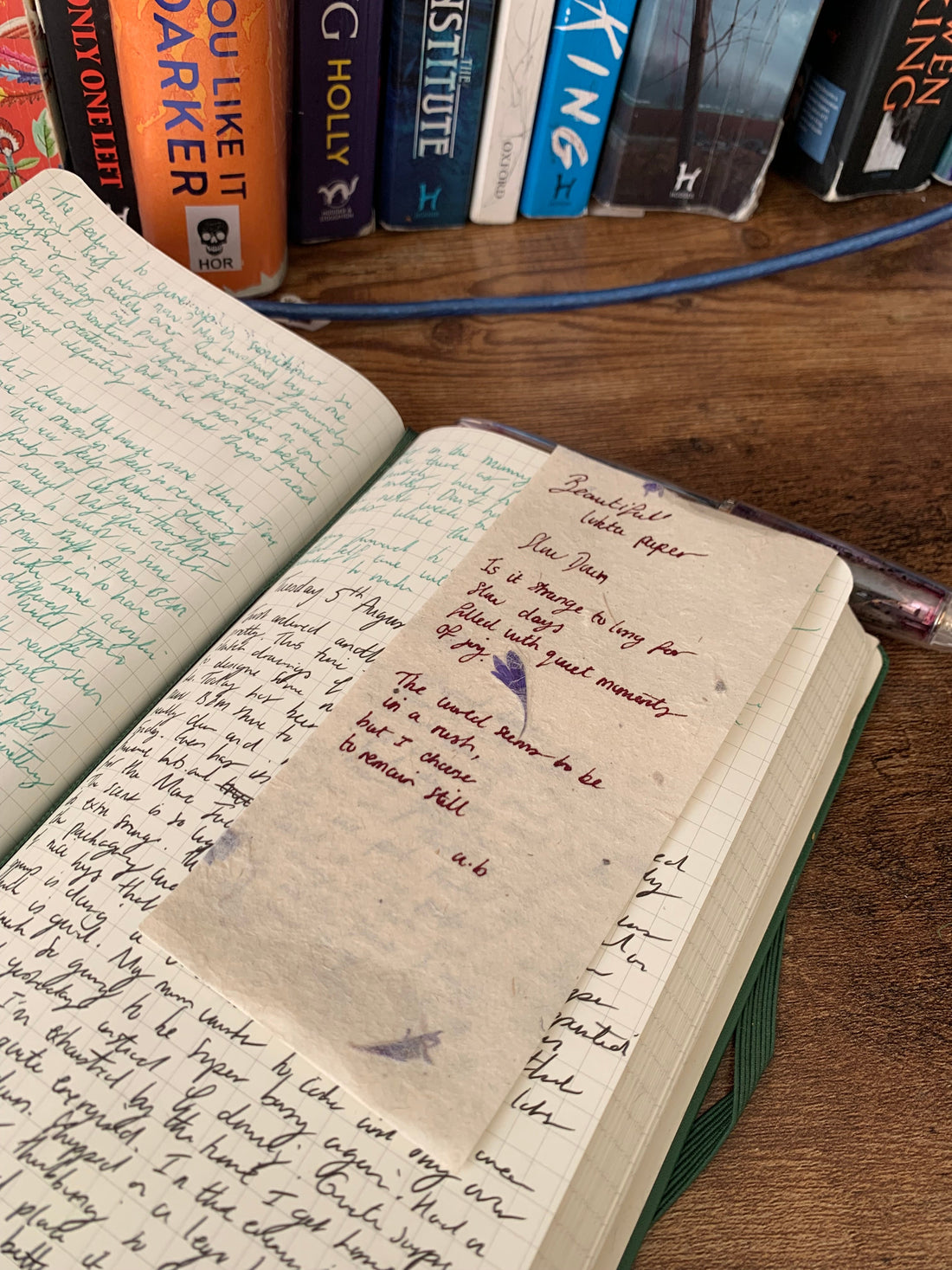
The Ancient Art of Lokta Paper: Nepal's Sustainable Treasure
Discover the remarkable story behind one of the world's most sustainable and durable papers
High in the misty mountains of Nepal where ancient traditions endure, artisans continue a craft that has remained virtually unchanged for over a thousand years. They're making Lokta paper—a remarkable material that's not only beautiful and durable but also represents one of the most sustainable papermaking practices in the world.
What Makes Lokta Paper Special?
Lokta paper comes from the inner bark of the Daphne cannabina shrub, known locally as "lokta." This hardy plant thrives in the harsh conditions of the Himalayas, growing at altitudes between 5,000 and 13,000 feet where few other plants can survive. But what makes lokta truly extraordinary isn't just where it grows—it's how it regenerates.
Unlike trees used for conventional paper, harvesting lokta bark doesn't kill the plant. The shrub completely regenerates its bark within 4-6 years, making it one of nature's most renewable resources. This sustainable harvesting has been practiced for centuries without depleting the mountain forests.
The Traditional Process: From Mountain to Masterpiece
The creation of lokta paper is a labor of love that connects modern artisans to their ancestors. The process begins with careful harvesting of the bark during specific seasons when the sap is flowing. Local communities, often women's cooperatives in remote villages, carry out each step by hand:
Harvesting: The outer bark is carefully stripped away to reveal the precious inner bark—the source of the fiber.
Cooking: The bark is boiled in large copper vats with ash water, which helps break down the fibers naturally.
Beating: Once soft, the bark is beaten with wooden mallets until it becomes a smooth pulp.
Sheet Formation: Using traditional wooden screens, artisans form individual sheets by dipping the screens into vats of pulp and water.
Drying: The wet sheets are pressed onto rocks, wooden boards, or sometimes directly onto stone walls, where they dry naturally in the mountain sun and wind.
Each sheet that emerges is unique—slightly different in thickness, texture, and character. These variations aren't flaws; they're the signature of handmade authenticity.
Properties That Amaze
Lokta paper possesses qualities that would make any modern manufacturer envious:
-
Longevity: Documents written on lokta paper can last for centuries. In fact, many ancient Nepalese manuscripts written on lokta are still perfectly preserved today.
-
Natural Protection: The paper is naturally antibacterial and insect-resistant, protecting whatever is written or printed on it.
-
Strength: Despite its handmade nature, lokta paper is remarkably strong and resistant to tearing.
-
Unique Texture: The visible fibers create a distinctive texture that's both rustic and refined.
Modern Applications for an Ancient Craft
Today's artists, crafters, and conscious consumers have discovered countless uses for this remarkable paper:
For Artists: The paper's absorbent quality makes it excellent for watercolors and printmaking, while its texture adds depth to any artwork.
For Writers: Journals made from lokta paper become treasured keepsakes, and the slightly rough texture provides a satisfying writing experience.
For Home Decorators: Lokta paper lampshades create beautiful ambient lighting as light filters through the natural fibers.
For Special Occasions: Wedding invitations, certificates, and important documents gain gravitas when printed on this historic medium.
Supporting Sustainable Communities
When you choose lokta paper, you're not just selecting a superior product—you're supporting entire communities in remote Himalayan villages. The lokta paper industry provides crucial income for families in areas where few other economic opportunities exist. Many cooperatives focus on empowering women, giving them financial independence and preserving traditional knowledge for future generations.
This economic support helps maintain rural communities that might otherwise be forced to migrate to urban centers, preserving both cultural traditions and the mountain environment.
The Environmental Impact
In our age of environmental consciousness, lokta paper stands as a shining example of sustainable production:
-
Carbon Negative: The lokta shrubs actually absorb more carbon dioxide than the papermaking process produces.
-
No Chemicals: The traditional process uses no bleaches, dyes, or harmful chemicals.
-
Minimal Water Use: The process requires far less water than industrial papermaking.
-
Biodegradable: The paper is completely natural and biodegradable.
-
Forest Preservation: Sustainable harvesting actually encourages forest growth rather than depletion.
Caring for Your Lokta Paper Items
Lokta paper requires minimal special care, but a few tips will help preserve it:
- Store in a cool, dry place away from direct sunlight
- Handle gently to maintain the natural texture
- For cleaning, use a soft, dry brush to remove dust
- Avoid exposure to excessive moisture, though the paper is naturally water-resistant
Where Tradition Meets Innovation
While the basic process remains unchanged, modern lokta paper artisans are finding innovative ways to expand their craft. Some experiment with natural dyes from local plants, creating papers in subtle earth tones. Others are developing new textures and weights to meet contemporary demands while maintaining traditional methods.
Bringing Lokta Into Your Life
Whether you're an artist seeking an exceptional medium, a writer wanting to journal on something special, or simply someone who appreciates sustainable, handmade goods, lokta paper offers a tangible connection to ancient wisdom and environmental responsibility.
Every sheet tells a story—of mountain winds and village communities, of sustainable practices and timeless craftsmanship. In a world of mass production and environmental concern, lokta paper reminds us that sometimes the oldest ways are also the wisest.
When you hold a piece of lokta paper, you're touching a tradition that has survived empires and centuries, supported by nothing more than human skill, natural materials, and respect for the environment. It's not just paper—it's a piece of living history, sustainably crafted for the future.
Experience this beautiful paper by clicking here.
